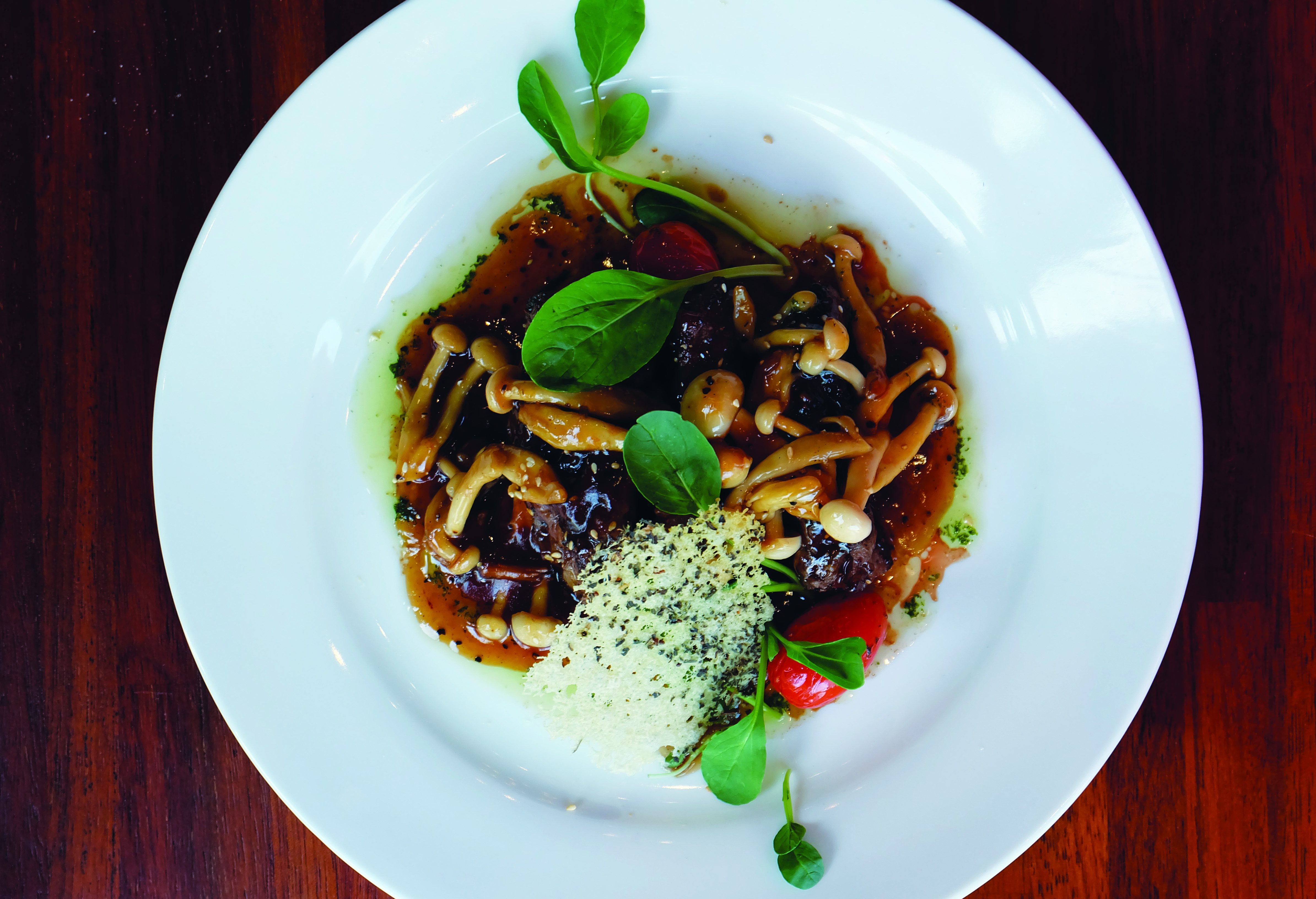Galbi Steak

Written and photographed by Karly Pierre
Translation by Karina Prananto
Kim Chul-woo rushes into the side door of the restaurant a few minutes late. After quickly bowing to me, he darts off to the kitchen. As a new parent to twin baby boys, he’s often flustered these days. When he emerges from the kitchen and takes a seat across from me, he’s calmer and smiling brightly.
“Did you enjoy the meal?” he asks, pointing to my empty plate.
A few minutes earlier, I had just finished eating three healthy portions of fish cutlet (생선 까스). The meal, Kim explains, was prepared by his younger brother, who was once a sous chef at Namsan Tower in Seoul and now co-owns this restaurant, Cafe Ddakddaguri (카페 딱따구리) in Sangmu, with him.
When they opened the restaurant three months ago, Kim, 43, thought it was a great opportunity to express his two loves: art and cooking. He points out the artwork that lines the walls of his restaurant, all of which he created.
“I really wanted to go to art school when I was young, but unfortunately my parents could not afford it,” says Kim. “As a kid I was super quiet and usually stayed in my room drawing or writing poems. I decided to apply to a technical high school to study cooking without telling my parents. I wasn’t really interested in cooking, but I wasn’t doing well in regular school, and I wanted to do something different.”

As a child growing up in Jangseong, he says most meals his mother cooked were nothing out of the ordinary. “Cold winter days were special though,” says Kim. “My mother would make mussel and radish soup (홍합무국) for my friends and me when we came home after sledding in the snow or making a snowman . . . My grandmother was from the countryside and made a special, ripe kimchi stew (묵은지김치찌개). I remember looking in the pot and seeing the pork buried in kimchi.”
After graduating from cooking school, Kim began building his career by entering cooking competitions and working at various restaurants. “I really wanted to teach, but at that time there were no cooking classes at universities in Gwangju,” says Kim. “I taught a few fruit carving lectures at the YMCA and cooking lectures at academies until finally a cooking department at Gwangju Health University opened. I was hired and have worked there ever since.”
Kim tries to instill in his students a carefree and creative approach to food. “Cooking is like any art,” he says. “A chef can create his own unique identity through food. At some point as a chef, you can’t be held back by what people say you can or can’t do. I never listen to those people. I make food that my guests can appreciate, and I don’t aim to attain some artificial idea of a master chef. I do whatever I like.”
In fact, Kim says he never really considered himself a chef until two years ago, when he cooked for his parents for the first time. “It was my father’s 70th birthday party,” he says. “I had been cooking for over 23 years but never had the time to cook for my parents before. When I served my father the beef galbi that I had prepared, I cried. And every time I think about that moment I want to cry again. I thought to myself, ‘if I could have done this for them earlier, I would have matured so much faster.’ That’s the day I became a real chef.”
In the future, Kim hopes to open a restaurant and start an art village in his hometown of Jangseong. He imagines traditional wooden pavilions near a pond, buzzing with talented artists. “I believe this dream will come true in maybe two or three years,” he says with a smile.
On my way out, I notice a cluster of drawings of a woodpecker (ddakddaguri, in Korean). “Ah, yes,” he says. “I like them because they never stop working.”
Galbi Steak
This is the same recipe for galbi steak that Kim prepared for his father’s 70th birthday party. Kim says that even though this is a cheaper cut of beef, it has the texture of a more expensive cut.
Ingredients: 150 grams short ribs (갈비살), 50 grams yellow onion, 30 grams white beech mushrooms (만가닥버섯), 30 grams matsutake mushrooms (새송이버섯), 1 roma tomato, black pepper, salt
Marinade: onion, kiwi, olive oil
Sauce Ingredients: 100 ml teriyaki sauce, 5 grams ginger syrup, sesame oil, butterstarch
Garnish: freshly grated parmesan cheese, fresh basil, mixed baby lettuce, basil oil
The Author
Karly Pierre has an MA in mass communication and has worked as an editor and writer for several publications. She is currently an assistant professor in the ESL department at Chosun University.





